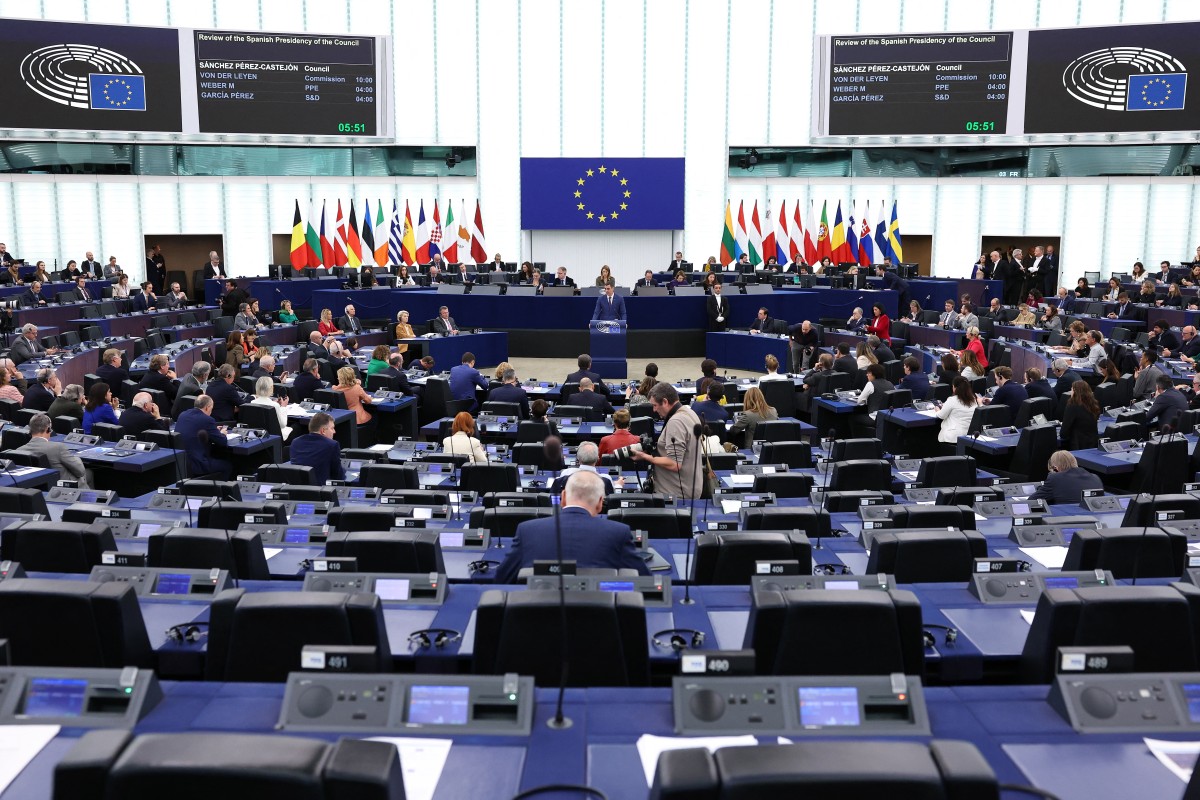Brussels, Belgium – Business activity in the eurozone stabilized in March thanks largely to a “modest recovery” in the service sector, a closely watched survey showed on Thursday.
The HCOB Flash eurozone purchasing managers’ index (PMI) published by S&P Global stood at 49.9 in March, up from 49.2 in February.
A figure below 50 indicates contraction. The latest reading — though right on that threshold — was the highest registered in nine months.
“Business activity in the euro area came close to stabilizing in March” with “only a marginal decline in output of goods and services”, the survey said.
It noted however that continuing output declines in the eurozone’s two biggest economies, Germany and France, were preventing the index from registering an expansion.
Overall activity in the service sector rose for the second month, posting the biggest increase since June 2023.
Manufacturing output, however, fell for the 12th successive month, though the decline was becoming less steep.
The indicator will feed into calculations on European Central Bank interest rates and the prospect for a rates cut as inflation risks recede in the European Union.
ECB chief Christine Lagarde warned on Wednesday of the risk of acting “too late” on cutting rates, firming up the likelihood of a reduction in June when the bank unveils its latest growth and inflation projections.
The ECB has kept its interest rates steady since October, following an unprecedented series of increases to tame what was red-hot inflation.
“Survey details show that the growth rate of employment and price pressures are easing,” said Clemente De Lucia, senior European economist at Deutsche Bank.
But he noted that the March reading was still just below the ECB projection of a very slight PMI increase into expansion territory.
‘Green shoots’
“Green shoots are emerging for later this year, but expect continued economic stagnation for now,” said Bert Colijn, senior eurozone economist at ING bank.
The easing of inflationary pressures in the services sector “helps our view of a June rate cut from the ECB”, he added. “A lot will depend on the consumer, who is gradually regaining purchasing power as real wage growth is now positive.”
Cyrus de la Rubia, chief economist at Hamburg Commercial Bank, who was quoted in the statement on the PMI reading, said that while PMI sentiment in Germany and France showed the same degree of weakness, there were differences.
“First, in Germany the output index improved in March, while in France it deteriorated. And second, the downturn in France is more widespread than in Germany, with both the manufacturing and services sectors contracting,” he said.
“In Germany, on the other hand, it’s only the manufacturing sector that is showing negative growth, while the services sector is broadly stagnating.”

